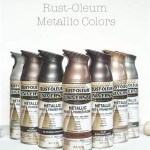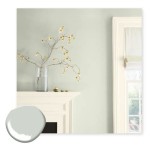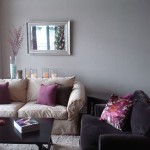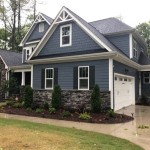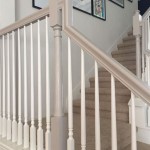What Is A Good Color To Paint A Fence?
Selecting the right color to paint a fence involves considering a complex interplay of practical, aesthetic, and regulatory factors. The decision extends beyond mere personal preference, demanding careful evaluation of the surrounding environment, architectural style, neighborhood regulations, and desired functionality. This article aims to provide a comprehensive guide to navigating these considerations, facilitating an informed choice that balances visual appeal with long-term suitability and practical concerns.
The function of a fence significantly influences the color choice. A fence designed for privacy might benefit from a darker color to enhance its visual solidity and create a more enclosed space. Conversely, a fence intended primarily for decorative purposes or to delineate property lines might be better served by a lighter, more subtle hue that blends seamlessly with the landscape. The intended use case should be a primary driver in the color selection process.
The material of the fence also plays a crucial role. Wood fences, for example, are highly receptive to a wide range of colors and finishes. Metal fences, however, may require specialized paints and coatings to ensure proper adhesion and prevent corrosion. Vinyl fences often come pre-colored, limiting the options available but also eliminating the need for initial painting. Understanding the specific properties and requirements of the fencing material is essential for achieving a durable and aesthetically pleasing result.
Furthermore, the surrounding environment and landscape should be carefully considered. A fence painted a vibrant, contrasting color might stand out dramatically against a lush green backdrop, creating a bold visual statement. However, such a choice might also clash with the natural environment, resulting in an undesirable aesthetic. Conversely, a fence painted in a more muted, earthy tone might blend seamlessly with the landscape, creating a more harmonious and natural look. Evaluating the existing color palette of the surrounding area is vital for making an informed decision.
Local regulations and homeowner association (HOA) guidelines can also significantly restrict color choices. Many HOAs have specific rules regarding fence colors, materials, and heights. Failing to comply with these regulations can result in fines or even the requirement to repaint the fence. Before making any decisions, it is crucial to thoroughly research and understand any applicable regulations to avoid potential conflicts.
The architectural style of the house should also be taken into account. A modern, minimalist home might benefit from a fence painted in a sleek, neutral color like gray or black. A more traditional, Victorian-style home might be better suited to a fence painted in a classic white or a soft, muted pastel. Coordinating the fence color with the architectural style of the house can enhance the overall curb appeal and create a cohesive visual impression.
The long-term maintenance requirements of different colors should also be considered. Lighter colors tend to show dirt and stains more readily than darker colors, requiring more frequent cleaning and maintenance. Darker colors, on the other hand, can fade more quickly in direct sunlight, necessitating more frequent repainting. Weighing the pros and cons of each color type in terms of maintenance is important for ensuring a long-lasting and aesthetically pleasing result.
The Enduring Appeal of White Fences
White fences have long been a symbol of Americana and suburban charm, offering a clean, classic, and versatile aesthetic. The color white evokes feelings of purity, simplicity, and openness, making it a popular choice for fences across a wide range of architectural styles and landscapes. White fences can brighten up a yard, visually expand the space, and create a welcoming atmosphere.
One of the key advantages of white fences is their versatility. They complement a wide range of house colors and architectural styles, from traditional colonial homes to modern farmhouses. A white fence can provide a crisp, clean backdrop for colorful flowers and landscaping, allowing the greenery to truly stand out. The neutral nature of white allows it to blend seamlessly with various design aesthetics, making it a safe and reliable choice.
White fences also offer practical benefits. They reflect sunlight, which can help to keep the surrounding area cooler during hot summer months. This can be particularly beneficial in warmer climates. Furthermore, white paint tends to be readily available and relatively affordable, making it a cost-effective option for fencing projects.
However, white fences also have their drawbacks. They tend to show dirt and stains more readily than darker colors, requiring more frequent cleaning and maintenance. Mold and mildew can also be more visible on white surfaces, making it essential to choose a high-quality paint that is resistant to these issues. Regular power washing and touch-ups may be necessary to keep a white fence looking its best.
The specific shade of white can also impact the overall aesthetic. A bright, stark white can create a more modern and contemporary look, while a softer, off-white can evoke a more traditional and rustic feel. Choosing the right shade of white to complement the surrounding environment and architectural style is crucial for achieving the desired outcome.
Exploring the Sophistication of Dark-Colored Fences
Dark-colored fences, such as black, dark gray, and deep brown, have gained popularity in recent years as homeowners seek to create a more modern, sophisticated, and private outdoor space. These colors offer a bold and dramatic aesthetic that can enhance curb appeal and provide a strong visual contrast to lighter landscapes and architectural elements.
One of the primary benefits of dark-colored fences is their ability to create a sense of privacy. Dark colors tend to absorb light, making the fence appear more solid and less transparent. This can be particularly desirable for homeowners who value privacy and want to create a more secluded outdoor area. The visual density of dark fences can effectively block unwanted views and create a more intimate atmosphere.
Dark-colored fences can also serve as a striking backdrop for landscaping. The dark hue provides a strong contrast to green foliage and colorful flowers, allowing the plants to truly stand out. This can create a visually stunning effect, transforming a plain yard into a vibrant and inviting outdoor space. The dark background enhances the richness and texture of the surrounding greenery.
Furthermore, dark colors can add a touch of sophistication and elegance to a property. A black fence, for example, can create a modern and minimalist look, while a dark brown fence can evoke a more rustic and natural feel. The choice of dark color should be carefully considered to complement the architectural style of the house and the overall design aesthetic of the property.
However, dark-colored fences also have their limitations. They tend to absorb heat, which can make the surrounding area warmer during hot summer months. This can be a disadvantage in warmer climates. Dark colors can also fade more quickly in direct sunlight, requiring more frequent repainting. Choosing a high-quality paint with UV protection is essential for mitigating this issue.
The scale of the fence should also be considered when choosing a dark color. A very tall, dark fence can feel overwhelming and enclose the space too much. In smaller yards, a lighter shade of dark color or a combination of dark and light elements may be more appropriate to avoid creating a claustrophobic feel.
Considering Natural Wood Tones for a Rustic Aesthetic
Choosing to stain a fence with a natural wood tone offers a timeless and organic aesthetic that blends seamlessly with the surrounding landscape. This option highlights the inherent beauty of the wood grain, creating a warm and inviting atmosphere. Natural wood tones can range from light honey hues to rich, dark browns, providing a wide range of options to suit different preferences and architectural styles.
One of the primary advantages of natural wood tones is their ability to create a rustic and natural look. This can be particularly appealing for homeowners who want to create a more relaxed and informal outdoor space. The natural variations in the wood grain add character and depth to the fence, creating a unique and visually appealing feature.
Natural wood tones also complement a wide range of landscaping styles. They blend seamlessly with green foliage, colorful flowers, and natural stone elements. This can create a harmonious and balanced outdoor environment, enhancing the overall beauty of the property. The natural tones enhance the feeling of connection with nature.
Furthermore, staining a fence with a natural wood tone can be a cost-effective option. Stain is generally less expensive than paint, and it can be applied more quickly and easily. However, it is important to choose a high-quality stain that provides adequate protection against moisture, UV rays, and insects. Regular maintenance is essential to prevent fading and deterioration.
However, natural wood tones also have their limitations. Wood fences require regular maintenance to prevent rot, decay, and insect infestation. Staining the fence regularly can help to protect the wood and extend its lifespan. However, this can be a time-consuming and labor-intensive process.
The specific type of wood used for the fence can also impact the final color and appearance. Different wood species have different grain patterns and natural colors. Consulting with a fencing professional is recommended to choose the right type of wood and stain to achieve the desired aesthetic.
Ultimately, the best color to paint a fence depends on a variety of factors, including personal preferences, architectural style, local regulations, and the surrounding environment. Carefully considering these factors will help homeowners make an informed decision that balances visual appeal with long-term suitability and practical concerns.

Fence Paint Color Ideas To Boost Curb Appeal Wow 1 Day Painting

Fence Painting Ideas That Will Make The Difference

Best Colour For Fences In Small Gardens

Best Fence Colours For Small Garden The Paint Guide

Popular House And Fence Color Combinations Find Your Match

What Is The Best Fence Paint Colour Shed

Do S And Don Ts For Choosing The Right Fence Colour Maria Killam

Tips For Choosing Paint Color Your Fence Pentagon

Fence Paint Color Ideas To Boost Curb Appeal Wow 1 Day Painting

Do S And Don Ts For Choosing The Right Fence Colour Maria Killam
Related Posts

